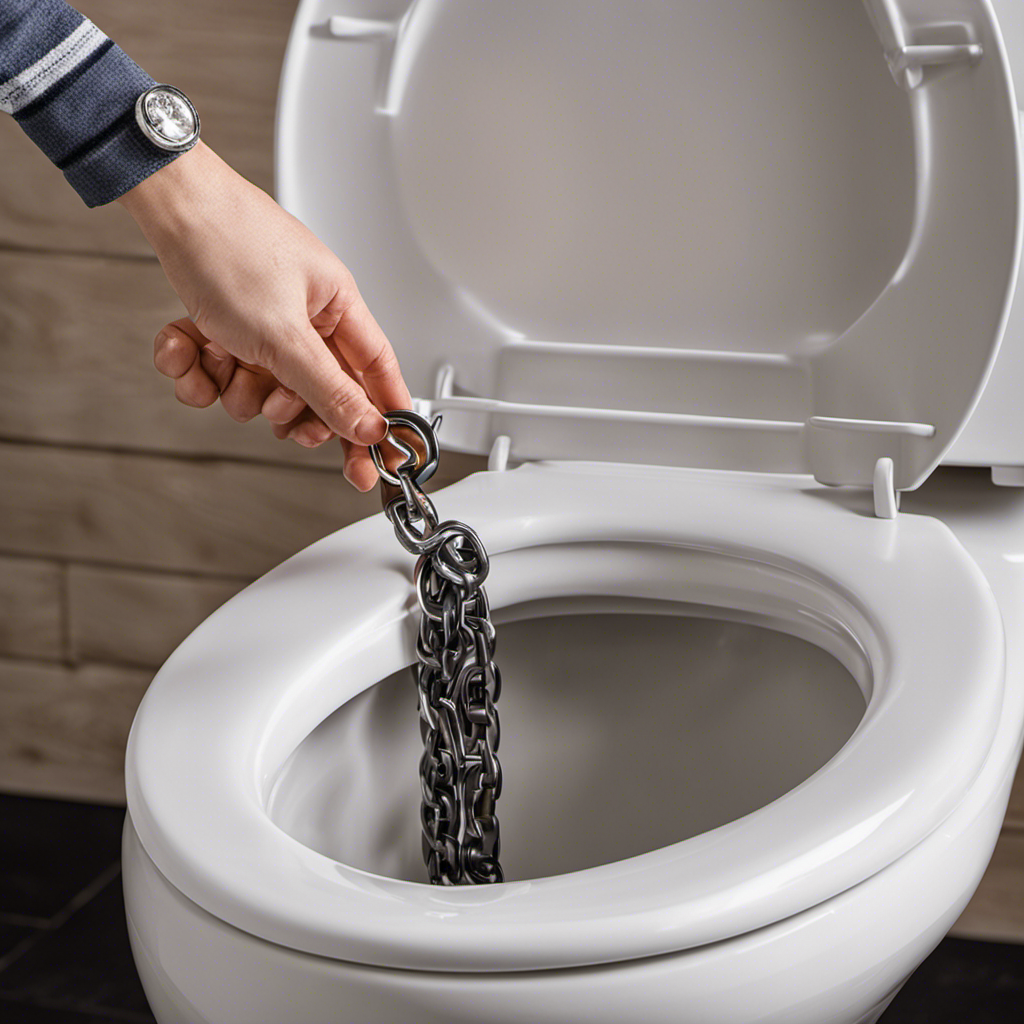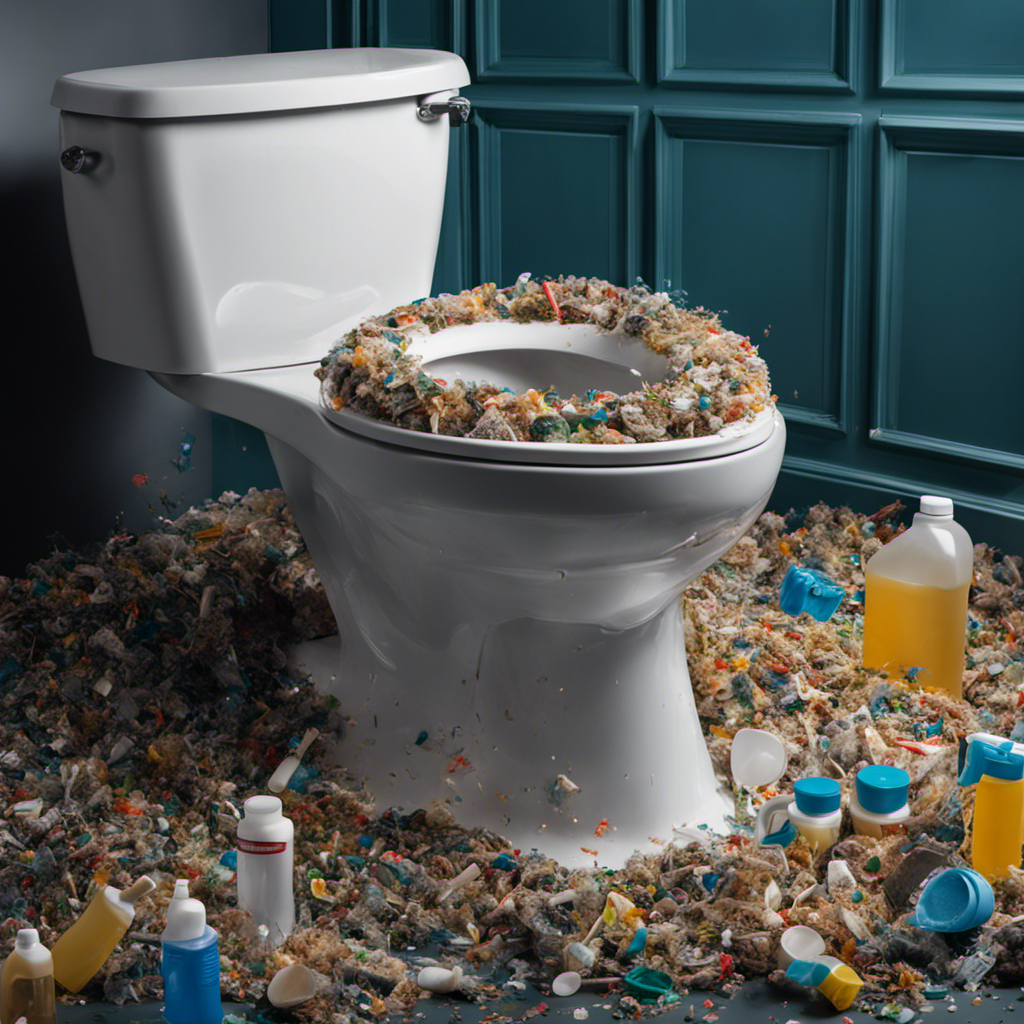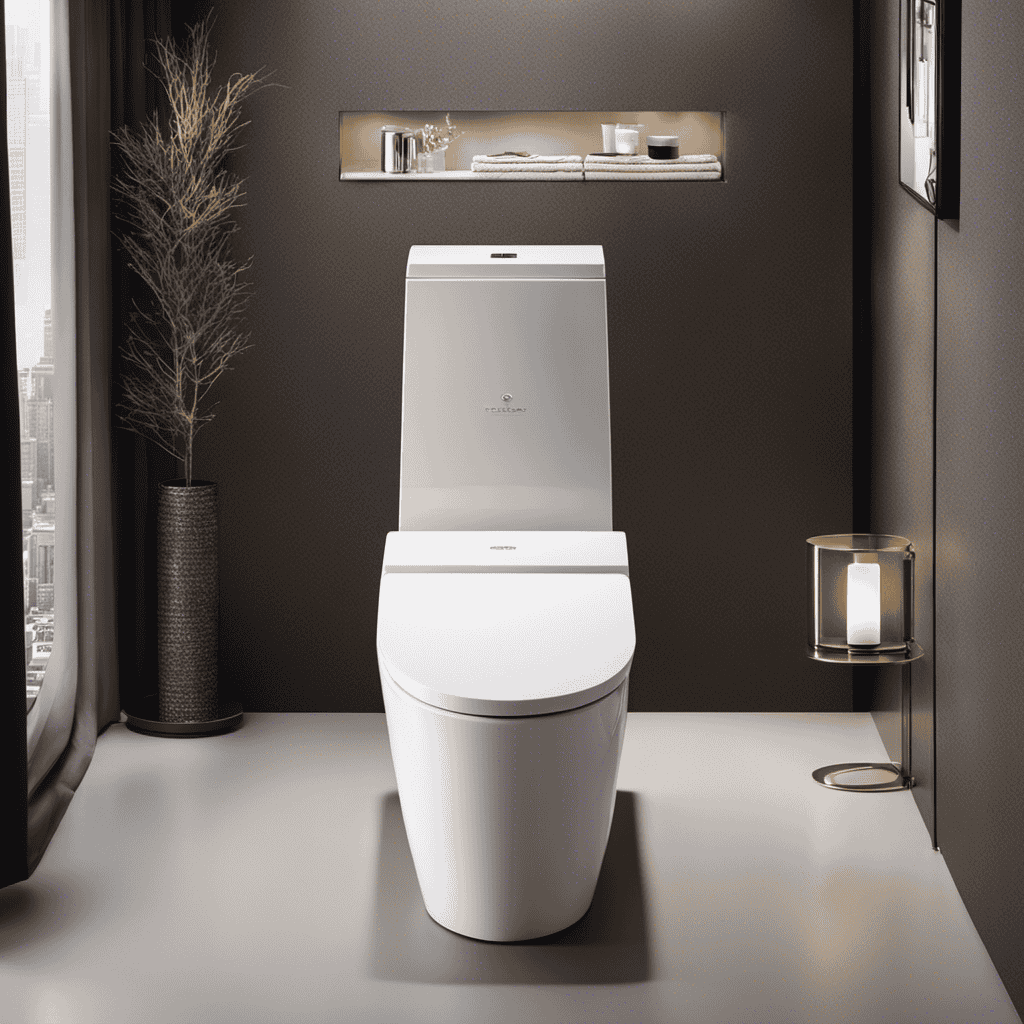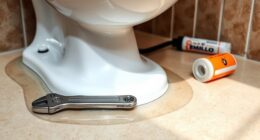Have you ever wondered how to remove an old toilet without calling a plumber? Well, I’ve got you covered.
In this article, I’ll guide you through the step-by-step process of removing an old toilet, providing detailed instructions and using my own personal experience.
With the right tools and a little bit of elbow grease, you’ll be able to tackle this task with confidence.
So, let’s roll up our sleeves and get started!
Key Takeaways
- Shut off the water supply and drain the toilet tank completely.
- Disconnect the water supply line carefully to avoid any water spills.
- Remove the toilet tank by unscrewing the bolts and lifting it off the bowl.
- Clean and sanitize the toilet area, including the bowl, tank, and surrounding area.
Tools and Materials Needed
You’ll need a few tools and materials to remove an old toilet.
First, gather a pair of rubber gloves to protect your hands from any dirt or bacteria.
Next, have a bucket or a large container ready to collect any water that may spill during the process.
You’ll also need an adjustable wrench to disconnect the water supply line from the toilet tank.
A putty knife will come in handy to scrape off any old wax or caulk around the base of the toilet.
Additionally, have a sponge or towel nearby to soak up any remaining water in the bowl.
Shutting off the Water Supply
Before starting, make sure to shut off the water supply to the toilet. This is a crucial step to prevent any water leakage during the removal process.
To turn off the water valve, locate the shut-off valve usually located on the wall behind the toilet. Rotate the valve clockwise until it is fully closed.
Once the water supply is turned off, the next step is to drain the water from the toilet tank. To do this, flush the toilet and hold down the handle to allow the water to drain completely. It is important to ensure that there is no water left in the tank before proceeding with the removal process.
Now that the water supply has been shut off and the tank is drained, it is time to move on to disconnecting the water supply line.
Disconnecting the Water Supply Line
To disconnect the water supply line, simply use a wrench to loosen the nut connecting it to the shut-off valve. Make sure to have a bucket or towel ready to catch any water that may drain from the line. Once the nut is loose, carefully remove the supply line from the shut-off valve. It is important to ensure proper drainage and sealing off the water pipe to prevent any water leaks.
When disconnecting the water supply line, it is crucial to follow proper steps to avoid any damage or accidents. Here is a helpful table to guide you through the process:
| Step | Action |
|---|---|
| 1 | Locate the shut-off valve for the toilet |
| 2 | Turn off the shut-off valve by turning it clockwise |
| 3 | Use a wrench to loosen the nut connecting the supply line to the shut-off valve |
| 4 | Carefully remove the supply line from the shut-off valve |
| 5 | Place a bucket or towel to catch any water that may drain from the line |
Once the water supply line is disconnected, you can proceed with the next steps, such as properly disposing of the old toilet.
Removing the Toilet Tank
After disconnecting the water supply line, it’s time to start removing the tank from the toilet.
First, I recommend turning off the water supply valve completely to prevent any leaks or spills.
Next, carefully unscrew the bolts that secure the tank to the bowl. It’s important to support the tank while doing this to avoid any damage or accidents.
Once the bolts are removed, gently lift the tank off the toilet bowl and set it aside.
Now, let’s talk about the proper disposal of the old toilet tank. It’s crucial to follow local regulations and guidelines for disposing of such waste. Contact your local waste management facility to find out the best way to dispose of it responsibly.
Finally, after removing the tank, it’s essential to clean and sanitize the toilet area thoroughly. Use a disinfectant cleaner and a brush to scrub the bowl, tank, and surrounding area. Rinse with clean water and wipe dry.
This will ensure a clean and hygienic environment for the installation of the new toilet.
Removing the Toilet Bowl
Once you’ve disconnected the tank, it’s time to focus on removing the toilet bowl. This step is crucial in the process of replacing an old toilet, and it requires attention to detail. Here’s a step-by-step guide on how to remove the toilet bowl:
| Step | Action |
|---|---|
| 1 | Turn off the water supply to the toilet. |
| 2 | Flush the toilet to remove any remaining water in the bowl. |
| 3 | Use a wrench to loosen the bolts securing the toilet to the floor. |
| 4 | Carefully lift the toilet bowl straight up, being careful not to spill any water or damage the wax ring. |
| 5 | Set the toilet bowl aside on a protective surface. |
| 6 | Remove the wax ring from the flange and dispose of it properly. |
| 7 | Clean the area around the flange and prepare it for the installation of a new toilet. |
Frequently Asked Questions
How Do I Know if My Toilet Needs to Be Replaced?
If my toilet constantly clogs, leaks, or has cracks in the bowl, these are signs of toilet damage. I would call a professional plumber to assess the situation and determine if replacement is necessary.
What Should I Do if the Water Supply Valve Is Stuck or Difficult to Turn Off?
If the water supply valve is stuck or difficult to turn off, I can use a pair of pliers to grip the valve and apply gentle pressure to loosen it. If that doesn’t work, I can try using a wrench to carefully turn off the water supply.
Can I Reuse the Wax Ring When Reinstalling the New Toilet?
Yes, you can reuse the wax ring when reinstalling the new toilet, but it is not recommended. There are alternatives to the wax ring, such as a rubber gasket, which provide a better seal.
Is It Necessary to Remove the Toilet Seat Before Removing the Toilet?
When removing a toilet, it is not necessary to remove the toilet seat. However, wearing gloves is recommended for hygiene purposes. The tools needed to remove the toilet seat include a screwdriver or wrench.
What Should I Do if I Accidentally Break the Toilet During the Removal Process?
If I accidentally break the toilet during removal, I should first assess the damage. If it’s minor, I can attempt to repair it myself. If it’s major, I should find a professional plumber for assistance.
Conclusion
In conclusion, removing an old toilet may seem like a daunting task, but with the right tools and a little patience, it can be accomplished easily.
Shutting off the water supply and disconnecting the water supply line are the first steps to take.
Then, removing the toilet tank and bowl can be done by following a few precise steps.
Just like a skilled surgeon delicately removes an organ, removing an old toilet requires careful precision to ensure a successful outcome.










